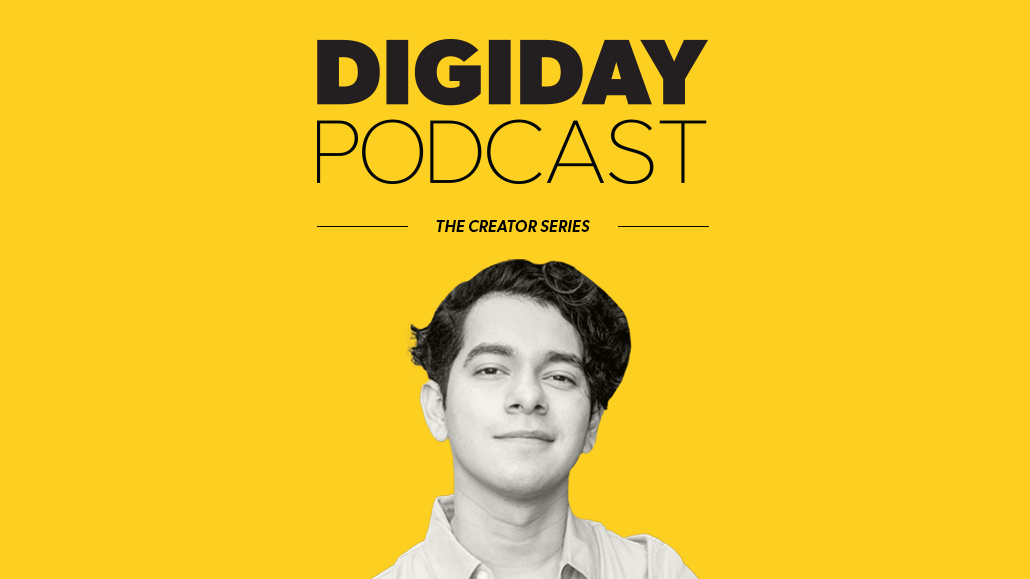Save 50% on a 3-month Digiday+ membership. Ends Dec 5.
This article is part of a special Digiday Podcast series that covers how content creators are building their brands and earning revenue from various major social media platforms. More from the series →
Subscribe: Apple Podcasts • Spotify
Like many short-form video creators, Jorge Soto got his start on TikTok. But a year and a half after uploading his first video to TikTok in March 2020, he gave YouTube’s TikTok clone a try.
“In two months, I gained a million subscribers, which is crazy,” Soto said in the third episode of the Digiday Podcast’s four-part series on short-form vertical video creators.
Initially, Soto would repurpose his TikTok videos — skits and what he calls “storytimes” — as YouTube Shorts. But eventually he shifted to producing first for YouTube Shorts and repurposing those videos for TikTok.
“I felt like, me as a creator, I was better off on YouTube because I had the access to long-form and the algorithm is a little — I don’t want to say it’s easier on YouTube Shorts, but it just makes sense,” said Soto. For example, his storytime format, in which he recalls a story from his life, performs reliably well on YouTube, and he’s able to see if one storytime video does well, then a similar one should perform similarly.
But as Soto implied, Shorts is not the be-all, end-all of his YouTube strategy. Shorts are a means of driving viewership for his long-form videos. Those long-form videos bring in the bulk of the money Soto makes on YouTube, whereas through the YouTube Shorts ad revenue-sharing program, Soto receives five to six cents per thousand views.
“It’s already a privilege to make money off short-form, so anything I’ll just take, frankly. But the way that I see it is short-form brings the audience,” Soto said.
Ad position: web_incontent_pos1
Here are a few highlights from the conversation, which have been edited for length and clarity.
His start in short-form video
I started on TikTok first, and it was March 2020. So quarantine boredom. I had nothing else to do. And I downloaded TikTok just for fun. And little by little, I was just creating videos. Nothing too crazy. Then, as it snowballed into more and more views, I was like, ‘Oh, I think I could work with this.’ So I started creating videos that I always wanted to: skits, Hispanic mom skits, comedy skits, vlogs, voiceovers and storytimes, which is what I really, really took off with.
The long road to Shorts success
I was on YouTube Shorts for about six months, reposting all my TikToks with no success. The videos will get roughly 500 to 2,000 views each, which isn’t horrible but compared to the amount of views on TikTok, it was very noticeable. But I was being encouraged by my friend BrentTV. So I was like, ‘I’m going to ride this out.’ And I was 80 Shorts in until my first one took off. And when that one took off, all the other ones took off as well.
Ad position: web_incontent_pos2
YouTube Shorts vs. TikTok
The analytics on YouTube Shorts are in real-time. So you can see what’s working in the moment, unlike TikTok where it takes two to three days for the algorithm to kick in or to show you what happened.
The short-form to long-form pipeline
I’ve had [YouTube Shorts] videos that have gained me 20,000 subscribers, 10,000 subscribers, which is unheard of. And through the same exact short-forms, I promote my long-form. And that’s where you make the real money, through long-form. For example, let’s say this Short got 100,000 views and made $10. But it did attract 50,000 people to watch the long-form one, and that was roughly $300, somewhere around there. So that’s where the real money was made.
More in Future of TV

Future of TV Briefing: The streaming ad upfront trends, programmatic priorities revealed in Q3 2025 earnings reports
This week’s Future of TV Briefing looks at what TV and streaming companies’ latest quarterly earnings report indicate about the state of the streaming ad market.

Future of TV Briefing: The creator economy needs a new currency for brand deals
This week’s Future of TV Briefing looks at why paying creators based on reach misses the mark and what IAB is doing to clear up the creator-brand currency situation.

Future of TV Briefing: WTF is IAB Tech Lab’s device attestation tactic to combat CTV ad fraud?
This week’s Future of TV Briefing breaks down the CTV ad industry’s new tool for fighting device spoofing.
Ad position: web_bfu




